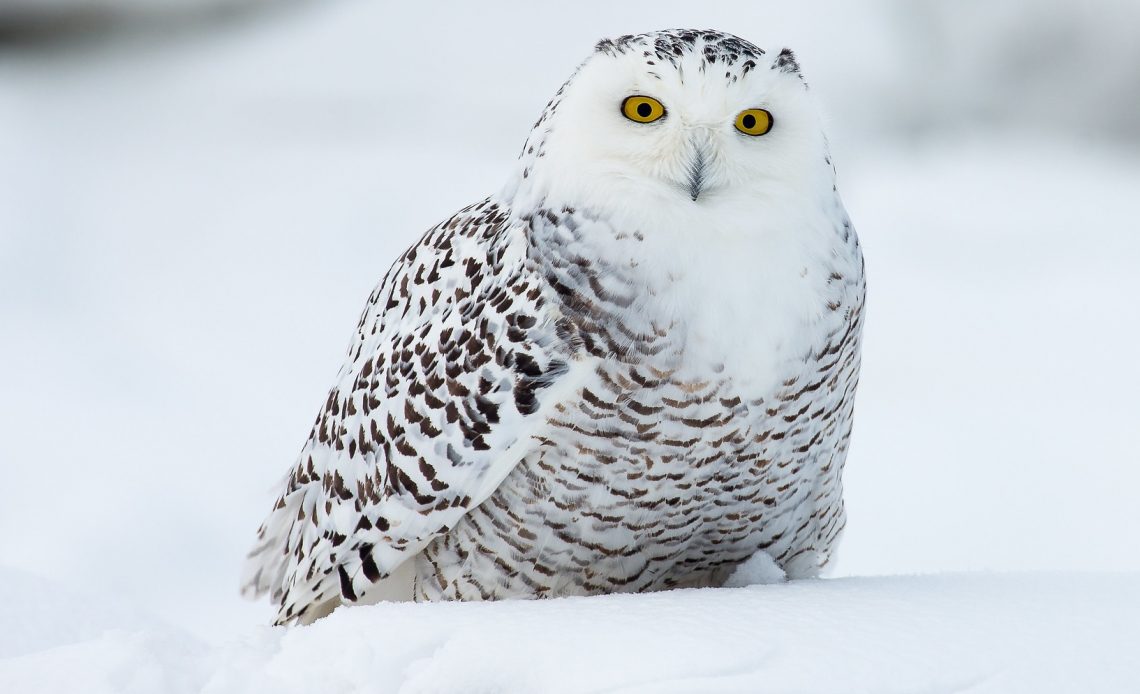

We’re here to help! Wild Yards is a completely free website that is 100% dedicated to helping you create a wildlife-friendly, sustainable yard. Read more
WildYards is reader-supported. When you buy a product through a link on our site, we may earn a comission. Every product is independently selected by our (obsessive) editors and our reviews are unbiased and objective. Read more about our mission or our privacy policy.
Owls are popular creatures in part because they are so mysterious. We attribute them to wisdom, witchcraft, and expert hunting – and they’re famous for keeping some people up at night with their hooting! However, there is still one owl-related question that many still ponder – where do owls go in the winter?
Generally, owls stay home during the winter – only a few species ever migrate. Owls very rarely move location based on season, which goes a little against what we know of other birds. However, owls have their own unique ways of coping with the winter freeze – and won’t fly for miles and miles to avoid the chill.
Owl behavior is truly fascinating – and when it comes to winter preparation, these nocturnal beasts have other birds beat. Let’s find out why.
Do owls migrate?
Some owl species have indeed been known to migrate, however, not all do. One of the most famous owls to migrate is the snowy owl. Snowy owls usually live in very cold areas, but in the winter, when food becomes harder to find, this beautiful owl will typically fly south in an attempt to keep its belly full!
However, for the most part, owls do not migrate or hibernate in the winter. Many owls reside in the same area and in the same nest for years on end! The owl’s attitude towards winter prep is, to borrow a cliche, ‘if it ain’t broke, why fix it?’
The fact that most species of owls are apex predators (and brilliant hunters) helps their survival chances. However, there’s a little more to this phenomenon than you might first imagine.
How do owls survive in the winter?
To survive the winter, much like people, owls learn to adapt to these new, cold temperatures. Here are some of the things that owls use to survive in the cold:
They tune up their hearing
Owls can hear up to ten times more sound than human beings, and their hearing is their best hunting tool, especially in the winter. Believe it or not, it’s this attribute that serves them best in the deep freeze.
Using their asymmetrical hearing (meaning that they have one ear on top of their heads and one on the bottom), owls will listen for their prey in the ground and hear them under up to two feet of snow! Barn owls are also known for using their facial hairs to detect sound.
They cozy up with feathers
Owls generally have thick feathers that can help them to handle the cold from the winter months. Therefore, compared to many other birds, most owl species are predisposed to experience greater levels of warmth without the need to burrow down.
They increase their hunting game
Owls need a lot of energy to survive in the cold, and they will therefore consume more food in the winter. Unlucky creatures that don’t hibernate or are caught out in the open will be a swift and easy snack for the average swooping owl.
Owls are incredible predators, largely thanks to their methods of attack. They are fast, strong, and make little noise when pursuing prey. Therefore, in winter, they are even less likely to face competition for food.
The average owl will likely prey on anything remotely smaller than itself – did you know that owls can eat bats (albeit rarely), for example?
How to help owls in the winter
Although owls can generally do pretty well on their own, as a wild yard owner, it is important to do what you can to help them survive in these cold months.
An easy way to help your local owls could be by creating an owl box in your garden. Owls are known for taking nests from other birds or staying in human-built ‘hotels’. By setting up an owl box in your garden, you will be helping your local owls to rely on an easy-access and warm home this winter.
The best owl boxes should be between 15 to 20 feet off of the ground for the owls to safely fly in and out. You can help make their nests warmer by adding sawdust and other natural materials. You may not get to see them use their boxes unless you camp out at night – but it’ll help to keep local wildlife in balance.
If you’re already in the process of attracting owls to your garden, setting up a box is a great step in the right direction.
Conclusion
Owls are incredible creatures who for the most part can handle what the winter brings without much concern or the need for migration. Chances are that on cold winter nights, you can even hear them hooting in your garden as they begin their hunts.
That said, you can always help them along by making them a home that they will likely use for years. What’s more, it’s a great way to start bird watching – providing you’re happy to put up with nighttime hooting for months to come!
